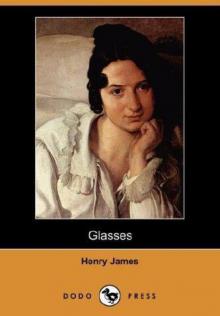- Home
- Henry James
Letters from the Palazzo Barbaro Page 13
Letters from the Palazzo Barbaro Read online
Page 13
Raffaello
NOTES
1. The Campanile of St. Mark’s had fallen in 1902 and it was being rebuilt.
2. The coronation of George V in England.
3. The title of the painting is The Barbaro Palace. It represented the grand ballroom of the Barbaro, strictly without human figures. It is now at the Boston Museum of Fine Arts. See W. Gay, op.cit., n.15.
4. Bernhard Berenson (later Bernard) (1865–1959), the famous art historian, and his wife Mary Pearsall Smith (1864–1945). Berenson settled in Florence in 1889, and rented I Tatti in 1900, the year he married Mary. Ralph Curtis had great affection for Bernard Berenson, as his letters to B.B. testify.
X
Ralph Curtis to Isabella Stewart Gardner
May 17th [1914]
(I.S.G.M. Ms.)
Venice, Palazzo Barbaro
Eccomi, carissima Regina1, nothing much new, except the campanile2 and the bric-à-brac. My mother is just the same, the old house quite as you recall it. Even Mancini3 is coming to see me this afternoon. […] Mrs. Eden has broken her leg and will be lame for life. He is handsomer than ever, a Padre Eterno! The exhibition is odious4. There is no good taste left, outside pastrycook’s.
From here I go to B.B.s. In Paris he gave himself the most expensive object he ever bought, a Chinese scroll of exquisite beauty, and he is now absorbed in Tang poetry!5 Russell’s6 company is “making good” in Paris. Smart Parisians will never make it popular with their set, but the few who love music and foreigners will make it pay … apparently. Dumas told our national Emma7: “En France nous aimons la musique militaire et les Chansonnettes”. John’s picture of James8 can be repaired and will get the Victoria cross for distinguished service. Henry now looks like a kind Cardinal, doesn’t he. Every hotel and lodging in Venice is full. As soon as it gets warmer beds will be put in gondolas. Morton Prince9 and our national Edith are now at “I Tatti”. How serious a savant do you take him to be? Goodbye my dear. Ever your affectionate slave
Raffaello*
* a good deal better
NOTES
1. “Here I am, very dear Queen.”
2. The new campanile was inaugurated in 1912.
3. Antonio Mancini (1852–1930), an artist who painted the portraits of the Curtises and of Isabella Stewart Gardner among others.
4. The eleventh “Esposizione Internazionale d’Arte della città di Venezia” for 1914. Ralph Curtis had exhibited his own paintings in the second International Exhibition of Venice, in 1897, and previously in the annual National Exhibition (1887). He had also participated in the Paris Exposition Universelle of 1889. By 1914 Ralph had given up painting. His decision to do so was the “germ” of one story by Edith Wharton, “The Verdict” (1908), where a painter suddenly realizes his art is no good as compared to the real art of a great painter. The story caused a turmoil in the Curtis circle, shocking especially Lisa, in spite of Henry Adams’s efforts to explain the whole thing.
5. Berenson bought a number of beautiful Chinese scrolls and oriental art pieces, especially between 1910 and 1917; see L.P. Roberts, “Preface”, p.8, The Bernard Berenson Collection of Oriental Art at Villa I Tatti, New York, Hudson Hills Press, 1991.
6. Henry Russell’s Boston opera, which was touring Europe.
7. “Our national Emma” is Emma Eames (1865–1952), a famous American opera singer, the wife of Julian Russell Story (1867–1919), son of William Wetmore Story.
8. Sargent’s portrait of Henry James, done on the latter’s seventieth birthday, was vandalised with a meat-cleaver by a Suffragette at the Royal Academy in 1914. The protest was not against either the painter or the subject, but to demonstrate that there was “no security” for property or art treasures “until women are given their political freedom” (Edel, The Master, p.490).
9. Morton Prince (1854–1929), the American psychologist and neurologist, author of important studies, among which The Dissociation of Personality (1906). Edith is Edith Wharton (1862– 1937), the American writer, and a friend of the Berensons and Henry James.
XI
Ralph Curtis to Isabella Stewart Gardner
2nd September [1915]
(I.S.G.M.Ts.)
Venice, Palazzo Barbaro
Dear Queen,
Here I am again, in the dear old place with which I always connect you. I find my mother hardly at all changed. She is bomb-proof as to nerves. The servants are in such a funk that she feels it would be mean to leave them in their fright. So she refuses to go away. I in vain tell her it isn’t good for her nerves. The mosquitos from Pola come buzzing over nearly every fine night, and drop bombs for half an hour or so1. So far the damage has not been great, but any time irreparable disaster may happen. I shall stay a fortnight. Venice is like a lovely prima donna in deep mourning. All the gilded angels wear sackcloth painted dirty grey. Anything that shines is covered. At night all is as black as in the dark ages. “Serrenos”2 call out “all is well” every half hour. But when danger is signalled the elec[tric] light is cut off, sirens blow, cannon firebombs explode and the whole city shakes on its piles. All the hotels but the Danieli’s are hospitals. No antiquaire is open. The only foreigners are those who own places here. Nobody is allowed to paint or photograph. At night the waiters at Florian’s give change with pocket electric lamps for a moment on the table. Many more have been drowned by tumbling into the black canals than have been killed by the enemy. Posts and bars are put up at all dangerous corners. San Marco is a fortress of sand bags […] We are so exhilarated by the good news from all the fronts. At last the beginning of the end seems in sight, but we expect still another winter of it, and possibly 18 months. Mama joins in best love to you, dear Queen. Ever yours affectionate
Raffaello
NOTES
1. For the photographic representation of Venice’s war defenses (including sand bags, etc.) see G. Scarabello, Il martirio di Venezia durante la Grande Guerra, Venezia, Tipografia del Gazzettino, 1933. The book also has a list of aerial incursions. The envelope of this letter carries the war stamp verificato per censura (i.e. verified by censors).
2. A possible mistake of Ralph Curtis, who seems to be using the Spanish word sereno. In a letter to Isabella Stewart Gardner from Seville he writes: “the Sereno, with his halberd and lantern, passes under my balcony, crying ‘Ave Maria purissima—las doce y sereno’”.
The Ballroom, Palazzo Barbaro
NOTES BY ARIANA CURTIS
(Marciana Ms.)
Many interesting people have been at Pal[azzo] Barbaro during our time. The most so was Robert Browning who constantly dined here, during his many visits to Venice—and whose doings and sayings D.S.C. recorded1. Then a frequent guest was J.A. Symonds2—a delightful companion—and dear Henry James—who often stayed with us. John Sargent3 has very often been a visitor—always most welcome—and many lesser artists from “Carolus” Duran4 down came here when Ralph lived with us. Empress F[rederic]k5 came to tea three or four times with her daughter. Also the present Queen of Sweden6—then Crown Princess—Princess Christian7, and her daughter—and Princess Charlotte of Meiningen8, all interesting to me as children and grandchildren of the beloved Louisa9.
I have since regretted that I never kept a visitors’ book. The most beloved guest was Gertrude Countess of Kenmare10 who for nine happy years passed always three or four weeks in May or June with us—and whose loving friendship has been one of the great joys of my life.
General de Horsey11 has always been an habitué of the Barbaro—and is full of most interesting recollections of old Venice in the Austrian days.
And the society of our faithful friend and neighbour Horatio Brown12 has always been a great pleasure to us both.
I hope to revise and enlarge these notes, hurriedly written at R.W.C.’s request—when we return from England—and I have ordered a copy made of Fontana’s detailed description of the Palace13.
The arcade was in terrible condition. I took R[ichar]d Hunt14, the American architect to see it,
and told him our plans for restoring it. He said “you will never make anything of it” which was a douche of cold water.
However we persevered, and made it what it now is. We would have liked to reopen the arches—but it was unsafe to do so—and they would have had to be filled with iron grilles to keep thieves out, which would have added weight, without support. So we rebuilt the wall, so as to show the columns, just in six old quattrocento windows corresponding to those in the façade—but two columns at the entrance from the cortile, with capitals which come from Ca’d’Oro, and had been replaced there by copies, made by Biondetti! (see Stones of Venice.) Biondetti had these capitals and many other Grecian fragments in his San Vio marble-yard at that time,—also a large capital of Pentelic marble, which had been removed from San Marco or the Doge’s Palace. We had the centre sawed out, with a circular saw, and set it up as a well head in the cortile,—the original one having been removed before our day. We were sure there must be a pointed arch on the G[ran]d Canal, and it was quite exciting when the plaster and bricks above the low modern door were knocked away, to see the ogive peak reappear. The arch was all there—but the ornamental part was gone. We found some old pilasters, however, and then the question came of how to fill the top. At last D.S.C. thought of having the design of the beautiful balcony of the so-called “Casa di Desdemona” copied in iron—which was done well by Bellotto—a poor blacksmith, with the soul of a cinquecento artist, who literally danced for joy when we gave him beautiful designs to execute—such as the above and the gate of the Abbaye of Fécamp, in Normandy, which he made for our Cortile. He was a poet too—but died young, unhappily—leaving a son who is a worthy successor.
We found a great deal to do in the great drawing-room. A beam below the “clerestory” windows had nearly rotted away, from rain having filtered in, and had to be replaced.
The wings and feet of many of the stucco putti were broken—apparently children had been allowed to throw hard balls at them, as we found several such on the cornice! Then Mrs. Ker15 had covered the ceiling pictures with bitumen! saying she did not like faces looking down at her!! We had a great scaffolding built, and cleaned the pictures, which were so confused one could not tell what they represented. The centre one, which we had thought might be the Deluge, turned out to be a Roman Triumph, with Zenobia in front of the Conqueror’s Car—her hands tied with pearl ropes! and the four others seem to be the Sibyls—one on horseback. The three mural decorations are Mutius Scevola by Piazzetta, Sabines Luca Giordano, Darius’s family before Alex[ander] by Pontebasso. The stucchi 1650, botega di A. Vittoria16.
26 June 1908
NOTES
1. D. S. Curtis’s “Diary”, now at the Biblioteca Nazionale Marciana, under press. On the subject see, Rosella Mamoli Zorzi, “A Venetian Diary” cit.
2. See note 2 to James’s letter XVIII.
3. See notes 3 and 4 to James’s letter XXVI.
4. Carolus-Duran (1837–1917), the French painter, also the teacher of Ralph Curtis in Paris.
5. Empress Frederick, née Victoria, Princess Royal of England (1840–1901), daughter of Queen Victoria. She married Frederick of Prussia (1831–1888) in 1858. Frederick became the emperor on the death of William I, in 1888, and reigned for 98 days.
6. Sophie of Nassau, the wife of Oscar III of Sweden.
7. Louisa, the wife of Christian, Crown Prince of Denmark.
8. Charlotte von Meiningen, née Princess of Prussia (1860), married Bernard, the Duke of Saxe-Meiningen in 1878.
9. Louisa, née Princess of the Netherlands (1828–1871), married Charles X of Sweden (1826–1873), the mother of Princess Louisa of Denmark.
10. See note 5 to Ralph Curtis’s Letter VIII.
11. General de Horsey lived in the Palazzo Semitecolo, near the Salute, on the Grand Canal. Constance Woolson committed suicide from that building.
12. See note 2 to Ralph Curtis’s Letter VI.
13. The volume G.J. Fontana, Cento palazzi di Venezia storicamente illustrati published in 1850.
14. Richard Morris Hunt (1827–1895), the American architect, well known above all for the Newport mansions (e.g. Vanderbilt House).
15. Olga (Nini) Kerr, a British lady whose brother Gervase lived in Venice. She was a friend of Mrs. Bronson.
16. The lines printed here in italics were added in pencil, in a different hand. Pontebasso is Fontebasso. “The Roman Triumph, with Zenobia …” is the central painting of the grand salon, by Antonio Zanchi, the artist of the other four paintings on the ceiling, Ipsicrateia Cutting her Hair to Wear a Helmet, Queen Artemisia Drinking the Ashes of her Deceased Husband, Clelia Delivered to King Porsenna, Ersilia Witnessing the Duel. Scholars agree on the subjects, but not quite on the dates (from 1690 to the first decade of the eighteenth century). On the subject see, I. Chiappini di Sorio, “Decorazioni del soffitto di Palazzo Barbaro”, in I pittori bergamaschi dal XIII al XIX secolo. Il Seicento, Bergamo, Poligrafiche Bolis, 1987, pp.577–579. On Zanchi see “Antonio Zanchi” by P. Zampetti, in the same volume. On the ceiling paintings see also B. Hanemann, “Antonio Zanchi and the ceiling of the Salone of the Palazzo Barbaro Curtis”, in Arte Veneta, XXXVII, 1983, pp.201–205. See also A. Riccoboni, “Antonio Zanchi e la pittura veneziana del Seicento”, in Saggi e memorie di storia dell’arte, V, 1966, pp.53–135. The Mutius Scevola is by Piazzetta, the Sabines (here attributed to Luca Giordano) is by Sebastiano Ricci, Darius’s Family, here attributed to Fontebasso, is instead Coriolanus by Balestra. On Piazzetta see L’opera completa del Piazzetta, Preface by R. Pallucchini, ed. by A. Mariuz, Milan, Rizzoli, 1982. On Fontebasso, see M. Magrini, Francesco Fontebasso, Vicenza, Neri Pozza, 1988; on S. Ricci, see J. Daniels, Sebastiano Ricci, Wayland Publ., 1976. The stuccowork does not seem to be the work of Vittoria, but the work of Ticino artists of the mid-XVIII century. On the stucco works and paintings of the salon see B J. K. Aikema, “Le decorazioni di Palazzo Barbaro-Curtis a Venezia fino a metà del Settecento”, in Arte Veneta, XLI, 1987, pp.147–153. For the Tiepolo ovals that were sold between 1866 and 1874 see F. Pedrocco, M. Gemin, Giambattista Tiepolo, Venezia, Arsenate, 1993, pp.408–409, A. Bayer, “Le decorazioni per Ca’ Barbaro”, in 1696–1996 Giambattista Tiepolo, Milano, Skira, 1996, pp.157–166, and the essay by D. De Grazia in D. De Grazia, E. Garbeson et al., in Italian Paintings of the XVII and XVIII Century, Washington, National Gallery of Art, 1996, pp.265–272.
The Courtyard, Palazzo Barbaro
NOTES BY PATRICIA CURTIS VIGANÒ
I have been asked to write a few lines about my home, Palazzo Barbaro. It is difficult to know where to begin. Why not start by saying that it has been part of my life from the day I first walked up the beautiful staircase that leads to the piano nobile.
I have vague recollections of arriving by gondola, the same gondola that today stands majestically in the courtyard in spite of it being out of its natural habitat. It was dark and mysterious, and as we stepped into the courtyard and approached what to me seemed the steepest staircase I had ever seen, my father took my hand. I was four years old.
I was not in the least intimidated by the immensity of the Barbaro, which, at the time, was entirely open and counted sixty-one rooms, lights blazing. It was all very much to my liking and became intensely more so as the years went by. I have always felt I belonged here and much happiness has this extraordinary palace given me.
Henry James believed that the Barbaro had moods. I can assure the reader that it does.
As I write these lines in the cool silence of a sunlit afternoon, innumerable memories cross my mind, all dominated by the spirit of the Barbaro and by that touch of magic that has always enchanted me as it does this moment, looking up and wondering at the beauty and harmony of it all.
How unfortunate that these walls cannot speak! They love to be loved and, in return, they have given inspiration to artists, writers and poets. Perhaps what moves today’s sensitive visitor is the unchanged elegance and serene atmosphere of decorative perfection.
There
is, however, something else, the soul, that is what Henry James felt, and of which he wrote.
I recall a particularly pleasant and fascinating afternoon in the library, honoured by the visit of the great Jamesian scholar, Leon Edel and of his wife in 1984. All sorts of extraordinary persons have come again and again, happy to return to Venice, the unique and most beautiful city, and anxious to revisit the Barbaro.
At the end of the last century the Barbaro was most certainly an intellectual Salon at its peak. Very often an invitation to tea also meant listening to Robert Browning read some of his work, while on the upper floor Sargent and my grandfather Ralph spent the afternoon painting in the large studio facing north, towards the courtyard and Santo Stefano.
Claude Monet, much to his regret, came to Venice only once, in 1908. He was a guest of my great-grandparents, Daniel and Ariana Curtis. He spent most of his time painting from our Watergate. It must have been wonderfully peaceful in those days, with no serenate and no motorboats to interrupt his coup de pinceau as he painted Palazzo Polignac, which faces us across the Grand Canal.
In the 1950s I vividly remember Serge Lifar joyfully walking into the Ballroom as he did every year at precisely six in the afternoon, on August 18th. There was no need to confirm the invitation. We knew that arriving in Venice his wish was to visit the Barbaro and its inhabitants, and that the next day, August 19th, he would, unfailingly, go to the island of San Michele and lay a rose on Diaghilev’s tomb. He could be anywhere in the world but, from wherever he was, he would return to Venice and lay the rose, until the year he died.

 The American
The American The Wings of the Dove, Volume 1 of 2
The Wings of the Dove, Volume 1 of 2 Frost at Midnight
Frost at Midnight Morning Frost
Morning Frost The Portrait of a Lady — Volume 1
The Portrait of a Lady — Volume 1 Fatal Frost
Fatal Frost The Europeans
The Europeans The New York Stories of Henry James
The New York Stories of Henry James Great Short Novels of Henry James
Great Short Novels of Henry James Washington Square
Washington Square The Portrait of a Lady — Volume 2
The Portrait of a Lady — Volume 2 The Ambassadors
The Ambassadors The Wings of the Dove
The Wings of the Dove The Princess Casamassima (Classics)
The Princess Casamassima (Classics) The Coxon Fund
The Coxon Fund First Frost
First Frost Henry James
Henry James The Daily Henry James
The Daily Henry James Travels With Henry James
Travels With Henry James The Reverberator: A Novel
The Reverberator: A Novel What Maisie Knew (Henry James Collection)
What Maisie Knew (Henry James Collection) The Outcry
The Outcry The Marriages
The Marriages The Wings of the Dove, Volume 2
The Wings of the Dove, Volume 2 The Bostonians, Vol. I
The Bostonians, Vol. I The Outcry: -1911
The Outcry: -1911 The Complete Works of Henry James
The Complete Works of Henry James Letters from the Palazzo Barbaro
Letters from the Palazzo Barbaro The Pupil
The Pupil The Bostonians, Vol. II
The Bostonians, Vol. II Pandora
Pandora Glasses
Glasses The Princess Casamassima
The Princess Casamassima What Maisie Knew
What Maisie Knew The Reverberator
The Reverberator The Golden Bowl - Complete
The Golden Bowl - Complete Confidence
Confidence Wings of the Dove (Barnes & Noble Classics Series)
Wings of the Dove (Barnes & Noble Classics Series) The Spoils of Poynton
The Spoils of Poynton